Day 1 :
Keynote Forum
Jos Stam
Adjunct Professor, University of Toronto, Canada
Keynote: Art of Fluid Animation
Time : 10:00-10:45

Biography:
Jos Stam was born in the Netherlands and educated in Geneva, Switzerland, where he received dual Bachelor degrees in Computer Science and Pure Mathematics. In 1989, he moved to Toronto where he completed his Masters and Ph.D. degrees in computer science. After that, he pursued postdoctoral studies as an ERCIM fellow at INRIA in France and at VTT in Finland. In 1997 he joined the Alias Seattle office as a researcher and stayed there until 2003 to relocate to Alias' main office in Toronto. He is now employed with Autodesk as a Senior Principal Research Scientist as part of Autodesk's acquisition of Alias in 2006. He is also affiliated with the University of Toronto as an Adjunct Professor in the Department of Computer Science. His research spans several areas of computer graphics: natural phenomena, physics-based simulation, rendering and surface modeling, especially subdivision surfaces.His latest creation is a unified dynamics solver called Nucleus, which is embedded in MAYA and has been used in many movies to create special effects.e has published papers in all of these areas in journals and at conferences, most notably at the annual SIGGRAPH conference. In 2005, he was awarded one of the most prestigious awards in Computer Graphics: the SIGGRAPH Computer Graphics Achievement Award. He also won two Technical Achievement Awards from the Academy of Motion Picture Arts and Sciences: in 2005 for his work on Subdivision Surfaces and in 2007 for his work on fluid dynamics. He was also featured in a January 2008 Wired magazine article.
Abstract:
In this talk, I present my work on fluid dynamics for the entertainment industry. The talk will introduce basic concepts of fluids and a brief history of computational fluid dynamics. Subsequently I will talk about my contributions of applying computational fluid dynamics to the entertainment industry like games and movies. I will also discuss our implementation of this technology into our MAYA animation software. In 2008 I received a Technical Achievement Award from the Academy of Motion Picture Arts and Sciences ("tech Oscar") for this work. I will also mention my work on bringing fluid dynamics to mobile devices like the Pocket PC in 2001 and the iPhone in 2008. In 2010 we released FluidFX and MotionFX for iOS and MacOS. The talk will feature many live demonstrations and animations. The talk is basically a condensed version of my book "The Art of Fluid Animation".
Networking & Refreshment Break: 10:45-11:00
Keynote Forum
Paul Kruszewski
CEO & Founder, Wrnch Inc., Canada
Keynote: Using AI to create frictionless motion capture
Time : 11:00-11:45

Biography:
Dr. Paul has been at the bleeding intersection of real-time AI and Computer Graphics since 2000 when he founded AI.implant to use AI (flocking behaviours and path finding) to create and simulate huge crowds of interacting autonomous characters. Customers included Disney and Lucas Film for visual effects; Bioware and EA for game development; and L3 and Lockheed Martin for military simulation. AI.implant was acquired in 2005 by Presagis, the world’s leading developer of software tools for military simulation and training. In 2007, he founded GRIP to use AI (behaviour trees) to create high fidelity autonomous characters capable of rich and complex behaviours. Customers included Bioware, Disney, EA and Eidos. GRIP was acquired in 2011 by Autodesk, the world’s leading developer of software tools for digital entertainment. In 2014, he founded wrnch to use AI to make the world safer, healthier and more fun by turning ordinary cameras into frictionless motion capture systems. Customers include Softbank and NVIDIA
Abstract:
Motion Capture has revolutionized computer graphics by making 3D animation incredibly lifelike. Not withstanding this enormous success, the prohibitly high set up and operating costs of traditional motion capture techniques, limits its use only the largest 3D content creators. In this talk, we describe how deep learning can overcome these barriers and turn any cell phone camera into a production ready motion capture system.
Group Photo:10:45-11:00
- Sessions: Computer Graphics | Computer Animation | Animation Industry | Modeling | Simulation | Game Design & Development | Gamification and Social Game Mechanics

Chair
David Xu
Regent University, USA
Session Introduction
Colin Brown
Computer Vision Scientist, Wrnch Inc., Canada
Title: Using AI to create frictionless motion capture

Biography:
Colin Brown is a Computer Vision Scientist at Wrnch Inc., Montreal working on deep learning models for activity recognition. He completed PhD in the Medical Image Analysis Lab at Simon Fraser University, where his research focus was on methods to extract salient information from diffusion tensor images of the brain. Combining creative and analytical thought to make something new excites him. Broadly, his interests lie in image analysis, computer vision, machine learning, video games, rendering, and game design.
Abstract:
Motion Capture has revolutionized computer graphics by making 3D animation incredibly lifelike. Notwithstanding this enormous success, the prohibitly high set up and operating costs of traditional motion capture techniques limits its use only the largest 3D content creators. In this talk, we describe how deep learning can overcome these barriers and turn any cell phone camera into a production-ready motion capture system.
David Xu
Professor, Regent University, USA
Title: How to use maya dynamic hair system to model realistic hairstyles
Time : 12:00-12:35
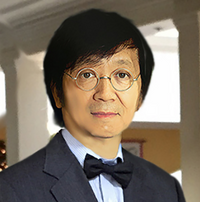
Biography:
Abstract:
Gregory Ducatel
Global Head of Software, Mill Film, Montreal, Canada
Title: Improvement on top of Pixar USD
Time : 12:35-13:10
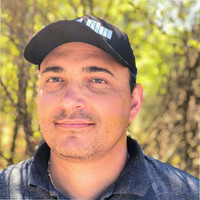
Biography:
Gregory Ducatel is Global Head of Software at Mill Film in Montreal, Canada. His excellent knowledge and understanding of processes to reduce the technical debt of the company to increase the value outputted by the team. He has worked or participated in many projects like Assassin's Creed, The Revenant, X-Men: Apocalypse, Independence Day 2, Civilization Beyond Earth, Mortal Kombat X, The Grey, Clash of the Titans, Red Cliff, The Day the Earth Stood Still, Laundry Warrior, Public Enemies, Mirror Mirror.
Abstract:
We will demonstrate the improvements made on top of Pixar USD and the Hydra render engine (including Optix from Nvidia) to support a VFX pipeline.
Lunch 13:10-14:00 @ Foyer
Irving Cruz-MatÃas
Professor, University of Monterrey, Mexico
Title: Characterization of pore space using a non-Hierarchical Decomposition Model
Time : 14:00-14:35

Biography:
Irving A. Cruz-Matías is full time professor in the Computer Science Department at University of Monterrey, Mexico. He received the Ph.D. in Computing from the Polytechnic University of Catalonia, Barcelona, Spain in 2014. His research interests include modelling, analysis and visualization of 3D biomedical samples, digital image processing and in general, the application of computer graphics in the bioengineering field.
Abstract:
Bio-CAD and in-silico experimentation are getting a growing interest in biomedical applications, where scientific data coming from images of real samples are used to evaluate physical properties. In this sense, analyzing the pore-size distribution is a demanding task to help to interpret the characteristics of porous materials by partitioning it into its constituent pores. Pores are defined intuitively as local openings that can be interconnected by narrow apertures called throats that control a non-wetting phase invasion in a physical method. There are several approaches to characterize the pore space in terms of its constituent pores, several of them requiring prior computation of a skeleton. This paper presents a new approach to characterize the pore space, in terms of a pore-size distribution, which does not require the skeleton computation. Throats are identified using a new decomposition model that performs a 2D spatial partition of the object in a non-hierarchical sweep-based way consisting of a set of disjoint boxes. This approach enables the characterization of the pore space in terms of a pore-size distribution.
Xupu Geng, Tian Li
Senior Engineer, Xiamen University, China
Title: Stylistic mixture of Monet and Chinese ink painting by deep learning
Time : 14:35-15:10

Biography:
Xupu Geng is Senior Engineer in State Key Laboratory of Marine Environmental Science, Xiamen University, China. His research interests are in the area of deep learning and its application in image processing.
Abstract:
Image style transfer is a classical problem in computer graphics and vision. As the palmy development of deep learning in recent years, Generative Adversarial Networks (GAN) and its variations like CycleGAN have been proposed to generate or transform images. Monet and Chinese Ink are two influential art styles in landscape painting. They have some likeness in impressionism, but concerning color and depth of focus, they are so different. Here we try to mix the two styles to create a new kind of artwork by CycleGAN. In fact the proposed method in this paper has many potential applications in artisitic creation.
Tian Li
Assistant Professor, Xiamen University, China
Title: Perception: Being art in virtual reality
Time : 15:10-15:45

Biography:
Tian Li is Assistant Professor in College of Humanity, Xiamen University, China. Her research interests are in the area of virtual reality and new media art. Now she is focusing on the art theory of virtual reality, augmented and mixed reality.
Abstract:
With virtual reality (VR) technology, artwork becomes a process rather than a definite object, the perception of receiver could be the process of Art, and has been of unprecedented importance in art creation. It is VR that really gives receiver an identity of “creator”, and the completion of VR art becomes inseparably bound to perception of receiver, in so far, it could be woven as strands into an activity that calls the VR artwork into play. It is only through the process of receiver’s perception that the artwork could enter into its changing visions. During the whole process, perception of receiver may be everywhere, and VR becomes a psychological state to describe the perception of receiver happened in the process of art reception. On one side, full body immersive in VR broaden the esthetic perception in artwork, but on the other side, there will be lack of emotion and thought in some degree, so the conflict between full body immersion and imagination remains to be mediated in present VR art.
Networking & Refreshment Break: 15:45-16:00

Biography:
David Fugere-Lamarre is a Co-founder and CEO of iLLOGIKA, an industry veteran who started his career many years ago as a programmer. Entrepreneurship is a family passion, he founded his studio, and iLLOGIKA is now one of the main actors of the Montreal indie community. He is a computer engineer, graduated from École polytechnique de Montréal. He also holds a master's degree in engineering project management. He is a ten-year veteran in the interactive gaming and development industry, having worked for companies such as Phoenix Interactive, Behavior Interactive, and Illogika. He is a specialist of Unity and teaches this technology in schools specialized in the field of the game and within companies.
Abstract:
FLICKBLOCKS:
FlickBlocks mixes classic gameplay with VR to create an experimental game that’s high intensity action and strategy. This game prototype emerged from our research and development initiative and has been produced in 3 weeks. The prototype is now published on itch.io for all to enjoy. Its category of Games, Research & Development, Virtual reality, and platforms is HTC Vive and Oculus Rift.
 Figure 1
Figure 1
 Figure 2
Figure 2
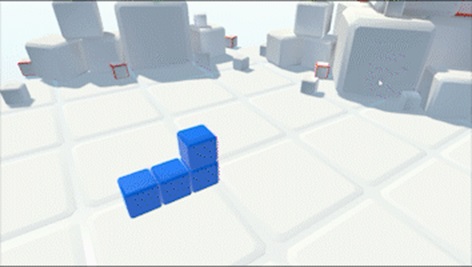 Figure 3
Figure 3
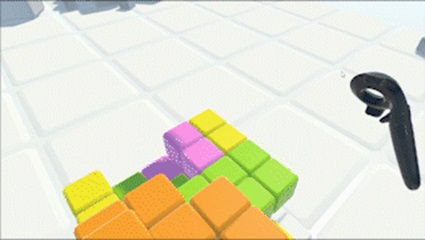 Figure 4
Figure 4
 Figure 1: Airpunch
Figure 1: Airpunch
AIRPUNCH:
Air Punch is an innovative VR demo exploring a new locomotion technique using punches we call Punch Dash ! Produced in between 4 to 5 weeks, the game is now published on itch.io for all to enjoy. Air Punch is above all a prototype, created for R&D purposes. ts category of Games, Research & Development, Virtual reality, and platforms is HTC Vive and Oculus Rift.
iLLOGIKA has developed externally games for UbiSoft, SquareEnix and Disney. More recently they have been focusing on AR/VR R&D and have developed a series of tools that are pushing the midddleware and hardware solutions that are currently available. They are interested in sharing the methodology, challenges and results they have achieved while developing VR specific animation pipelines, texturing and destruction tools.
Stefan Doychev
Lead Technical Developer, Hack and Paint & Co-Founder,BG Imane, Bulgaria
Title: Designing games in virtual reality: Introduction and basic concepts
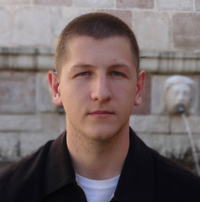
Biography:
Stefan Doychev is Lead Technical Developer at Hack and Paint & Co-Founder of BG Imane from Bulgaria, also a passionate Game Developer and a game jam veteran. Despite his internal battle between developing applications for the biggest OS today - Android, which he embraced back in 2011, and his never-ending desire to create the next 'big thing' in the game industry, he is always ready to play with some new tech gadgets. When not behind his favourite PC, he could be found chasing the ball at the rugby field - he is currently President of the Murphy's Misfits RFC.
Abstract:
Statement of the Problem: The traditional game design rules and guidelines do not work when creating content for the Virtual Reality platform. Due to the limitations of the hardware, some specifics of the new platform (the image resolution, the weight of the equipment) and immaturity of the current game design and development tools, the developers face a new type of problems and challenges when have to create content for the Virtual reality platform. Another very common problem experienced from both users and developers of which especially the second have to be very aware of and try to limit it as much as possible is the feeling of dizziness (sickly side effects) after several minutes of play time, also known as vection – several solutions to this problem will be addressed and proposed in the presentation.
The importance of the sound effects and the user interface and general user experience are crucial for a deep, satisfactory and engaging interaction with the modern VR headsets. Combined with the need for a stable and permanent frame rate above 90 frames per second this creates the need for a multidisciplinary team made up of great professionals when a VR game is being developed.
In the presentation will be discussed different approaches when a new Virtual Reality game is being designed and developed, some example solutions of the problems listed above will be proposed and real-life examples will be proposed. Those examples are based on the development of the SUNWALKER VR award-winning game (Winner of the Best In Play award at the Game Developers Conference 2018). The purpose of this presentation is to raise awareness and explain what to expect when entering the world of game development in Virtual Reality and the explanations will be backed up with examples from actual solutions that occurred during the development life in Hack and Paint – a distributed VR game studio.
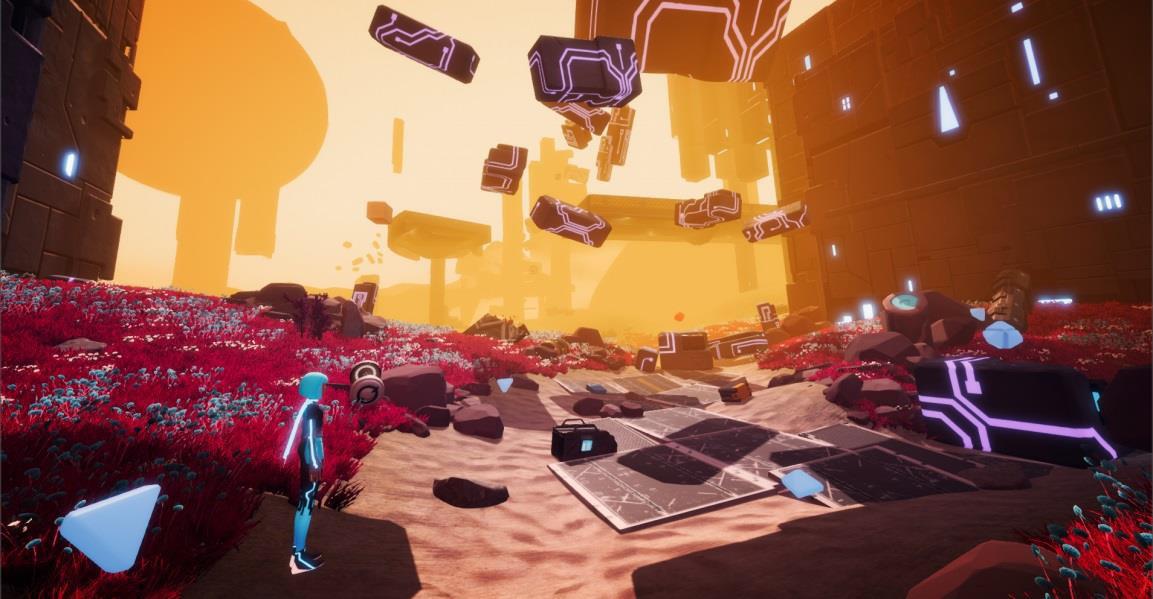 Image 1: A screnshot from the beautilful world in SUNWALKER - an award-winning VR game
Image 1: A screnshot from the beautilful world in SUNWALKER - an award-winning VR game
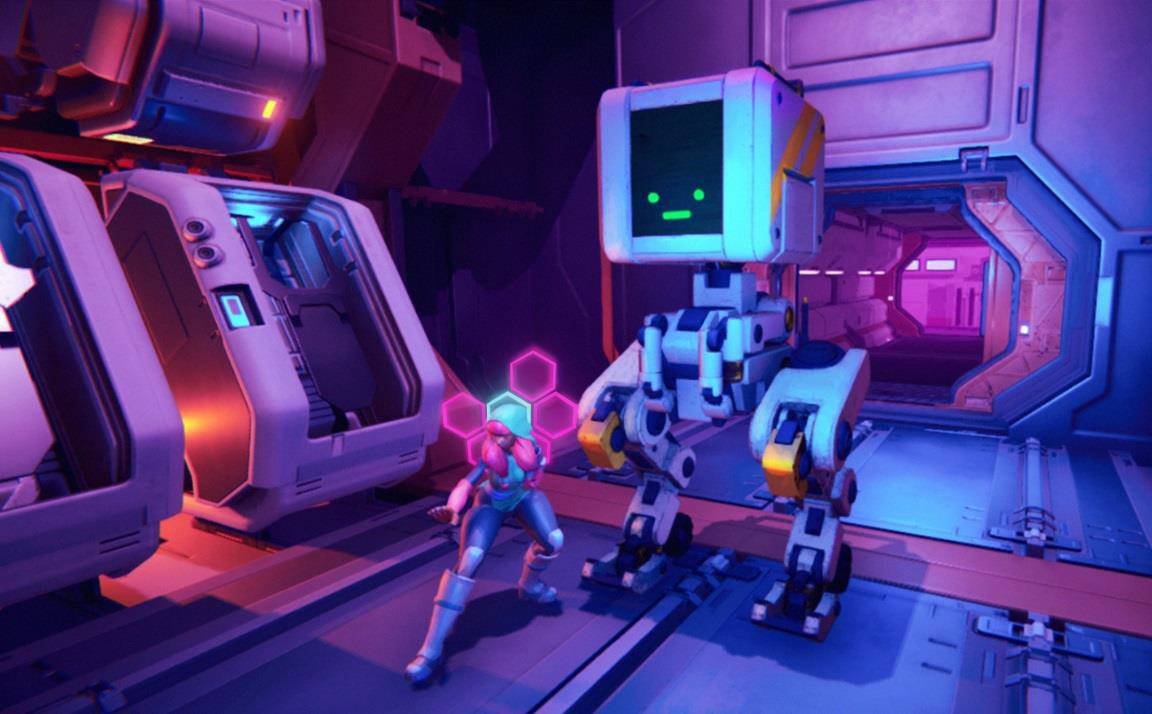 Image 2: A screnshot from the SUNWALKER and the main protagonists in the game
Image 2: A screnshot from the SUNWALKER and the main protagonists in the game

Biography:
Derek Ng-Cummings is the Animation Director at Kabam, Canada. He is responsible for collaborating with multi-faceted teams of designers, artists, and programmers to develop compelling mobile, free-to-play games for Kabam. He determines artistic animation style and technical requirements to ensure seamless integrations with the outputs of designers and programmers, animators, technical artists, effects artists. He takes on a leadership role at Kabam, through coaching and advising teams by providing continuous reviews and constructive feedback on game builds. As the Animation Director, he implements pipelines for animation production and game prototyping. He is passionate about growing and building internal teams in the creative departments. Some of his’s most notable work at Kabam includes the development of Marvel and Transformers games by pushing the visual bar for animation in the mobile market.
Prior to Kabam, he worked at Electronic Arts on game titles such as NBA JAM, Fight Night 4, and NHL. He has also held positions at Bright Light Studios, MainFrame Entertainment and the National Film Board and has over 18 years of animation experience. He received his education at the University of Manitoba and Red River College.
Abstract:
- Exploring animation technology and how it has changed the way we view the animation in our day to day life in entertainment.
- How technology has changed the animation process when developing for film, tv, and games.
- Why Technology has turned animation from a fine art to anyone can do it if they have the right tools.
- What I’ve done to embrace technology to raise the bar when creating animation for mobile games.
- How the advancement animation technology has helped other industries like; medical science, and educational learning.
The advancement of animation technology has changed the way animators who were once true fine arts to a new world of possibilities. Creating stunning animated films to raising the visual bar for games and helping other industries to solve problems in the world, together we will explore these advancements and how I’ve come to embrace this like so many others.
Sicilia Ferreira Ponce Pasini Judice
Faculty of Technical Education of the State of Rio de Janeiro, Brazil
Title: Reaching the impossible - Tales of a computer graphics teacher
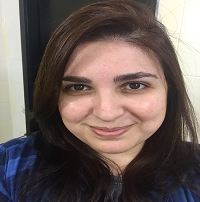
Biography:
I teach computer graphics since 2009 in a public faculty of the State of Rio de Janeiro, in Brazil. Specifically in a beautiful city called Petrópolis. This faculty offers only one course called Training in Information and Communication Technology, with 3 years of duration, divided into 6 periods. My discipline of Introduction of Computer Graphics occurs in the 4th period, where normally, students are worried about getting a job or retaining the job they already have. In Brazil we don’t have manny opportunities in jobs with computer graphics. In fact, this market has been growing in recent decades, but the opportunities are few. In this way, my discipline is not that attractive as I would like it to be. In this session I'm going to talk about how computer graphics have motivated students to improve their programming skills, even though they are not interested in it. Furthermore, I'm going to present some success stories from students who are effectively working with computer graphics, one of them in Australia.
Abstract:
I teach computer graphics since 2009 in a public faculty of the State of Rio de Janeiro, in Brazil. Specifically in a beautiful city called Petrópolis. This faculty offers only one course called Training in Information and Communication Technology, with 3 years of duration, divided into 6 periods. My discipline of Introduction of Computer Graphics occurs in the 4th period, where normally, students are worried about getting a job or retaining the job they already have. In Brazil we don’t have manny opportunities in jobs with computer graphics. In fact, this market has been growing in recent decades, but the opportunities are few. In this way, my discipline is not that attractive as I would like it to be.
In this session I'm going to talk about how computer graphics have motivated students to improve their programming skills, even though they are not interested in it. Furthermore, I'm going to present some success stories from students who are effectively working with computer graphics, one of them in Australia.
Khor Kheng-Kia
Universiti Tunku Abdul Rahman, Malaysia
Title: Hybridity of computer graphics and traditional performing art: A case study on Malaysian Shadow Play
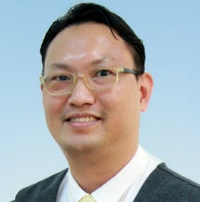
Biography:
Assistant Professor Dr. Khor Kheng-Kia has his expertise in computer graphics and passion in preserving traditional performing arts via digital technologies. His main interest fells between the convergence of computer technologies and traditional art. He has published more than half a dozen of journal articles on topics related to Malaysian shadow play and the use of digital technologies to capture and/ or preserve the art of this art form. He is currently working as assistant professor cum deputy dean (academic development & undergraduate programme) of Faculty of Arts and Social Science, Universiti Tunku Abdul Rahman, Malaysia. As a panel assessor of Malaysian Qualifications Agency (MQA), he also has more than a decade of academic experience in teaching arts and design subjects as well as developing educational/ training materials.
Abstract:
With the advent of 4th Industrial Revolution, many traditional performing arts and games are facing severe competitions from the ones in digital forms and media. Most of the youngsters today are widely and highly exposed to the ubiquitous and proliferate online/ mobile games inundated with stunning and delectable Computer-Graphics (CG). Therefore their interest towards traditional performing arts are evanescent. This global phenomenon is threatening the survival of traditional performing arts in many developing countries.
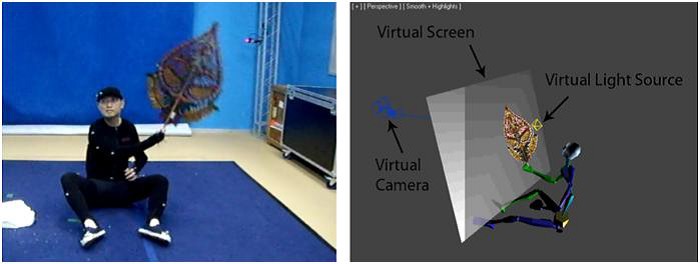 Figure 1: A Motion Capture Experiment Related to Malaysian Shadow Play (image courtesy of the author)
Figure 1: A Motion Capture Experiment Related to Malaysian Shadow Play (image courtesy of the author)
In Malaysia, almost all traditional performing arts and games are receiving lukewarm interest from the local youngsters and thus many of them have either extinct or unlikely to last long. This include wayang kulit Kelantan which can be perceived as a national shadow play with high-standard of cultural and artistic values.
McLuhan’s theory asserted that technology innovations are merely enhancements or extensions of ourselves and people will use them to enhance their current activities, practices and values. Since 2006, the author has been studying on the application of Computer Graphics (CG) in capturing, simulating, preserving, conserving and reviving the arts and visual of traditional wayang kulit Kelantan.
Key-frame animation, motion capture, procedural animation techniques, just to name a few, have been explored and applied by the author in many experiments related to wayang kulit Kelantan. In addition to that, a methodological framework has also been introduced in 2016 to suggest the best possible outcomes for digitalization of wayang kulit Kelantan. Here, the author would like to share with the CG adepts from all parts of the World on my decade of research related to the convergence of traditional shadow play and emerging CG techniques.
Ma. Corazon G. Fernando
FEU Institute of Technology, Philippines
Title: Journey to liberty: Museum of Philippine political history virtual tour
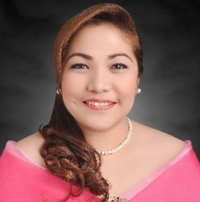
Biography:
Ma. Corazon G. Fernando is an alumnus of Polytechnic University of the Philippines with a Master’s Degree in Information Technology and currently pursuing her doctorate degree in Technological Management in Technology University of the Philippines. She has been handling Information Technology subjects for the the last 10 years and currently a full-time faculty member of the College of Computer Studies at FEU Institute of Technology. She also engage in various IT research and her oral presentation accepted in ICCIP 2017 Japan. Perivous research paper presented in IEEE Region 10 Conference (TENCON 2016) Singapore, IEEE Region 10 Symposium (TENSYMP) Indonesia, and IEEE TENCON 2015 China. She is also a member of several organization such as American Society for Research (ASR), and International Association of Computer Science and Information Technology (IACSIT).
Abstract:
The project is primarily focused to the Virtual Tour for the Museum of Philippine Political History. Virtual Tour was chosen as a promotional tool because it is one of the contemporary media today. The tour will showcase each of the station and artifacts that is present there, it will have 360° audio-visual presentation and 360° free-roam tour. The audio-visual presentation will have narration for each station inside the museum, the free-roam tour you can interact with the artifacts inside of each station present in the museum.
The project’s goal and advocacy are to provide an innovative experience and knowledge about the state of the country’s political state throughout the years while it provides promotion to the museum and information about it. The promotion doesn’t only aim for the museum but also for the political history so that the community would understand its importance and significance.
The virtual tour will be present in their government website, Facebook page, and promotional website.












